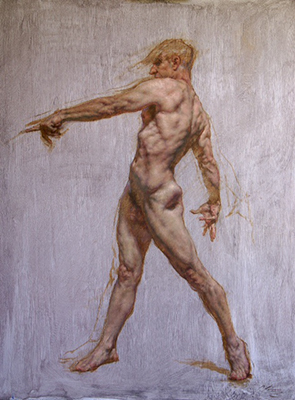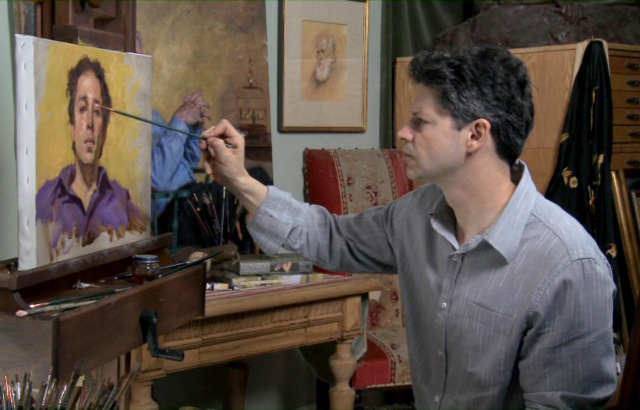
Graydon, I haven't done strings of pre tubed "Local's" (Liberace hates that word - don't know why). Neal most teachers ask you to bring colors in a certain paint for their workshop - granted this gets pretty expensive, but Joy Thomas once told me - "you wouldn't want to attend a piano workshop and have every one with different keys". However, the down side is that the hues may be too difficult to handle, never quite subtle enough or unified-especially if one isn't as skilled as Liberace, Shanks or Beth. That is, by breaking the hues up so that they are not exact, one may achieve a sort of vibration.some call this broken color. However, one has to model the form anyway, so how does one maintain consisten hue, value chroma relationships? At first consideration, the advantages might come in the broken nature of the paint. Its not because I know one cannot mix each step, one at a time. Beth, do you mix each value on the fly, or do you make some mixtures ahead of time? You see, its hard for me to conceive a palette without pre-mixed values.
ROBERT LIBERACE REAL FACE PLUS
To make this work better, perhaps, or at least how I might set it up-take the Aliz Crimson plus Pthalo and make a string of values.

But then, you have only one value and one hue, instead of the range. This would neutralize a mixture of Aliz Crim. you get a neutral, likely a low chroma purple-blue. So, what are the advantages here? If you mix Pthalo Green plus Aliz. Her work can be found in many private collections and continues to be exhibited in galleries and museums throughout the US.What I am trying to point out is that this palette works, but one still has to mix it so that it is in flesh range. Rebecca has won numerous honours, including the International Portrait Society’s Award of Excellence, in 2009 and she was an ARC finalist in 2019. In 1983 she founded The Studio at Glen Gables, where she continues the legacy of teaching classical realism with the discipline and dedication of the old masters. Rebecca lives in New Jersey with her husband Greg. She demonstrates her sheer passion for visual story telling through precision drawing, rich luminous colour, and dramatically engaging subjects. Rebecca is known for painting highly narrative figurative works in the classical realism style. While Rebecca continued to train with highly accomplished artists, namely Robert Liberace and John DiMartin, it was her father, and later her final mentor Nelson Shanks, who have had the greatest impact. She went on to study at the Pennsylvania Academy of Fine Art and eventually traveled to France to train with Ted Seth Jacobs at studio L’École Albert Defois. Rebecca’s passion for drawing and painting were nurtured under her father’s strict tutelage. Rebecca’s father, her earliest mentor, was a working artist who began her classical training at the age of seven. Rebecca Tait was born in Camden New Jersey in 1961.
ROBERT LIBERACE REAL FACE HOW TO
The art of the signature and how to support loose canvas are discussed. Final critique and individual suggestions for advancement are suggested. All aspects of value, temperature, colour, chroma, placement, shape and edges are all put through final adjustments. ĭay 5: Fine details of anatomy are checked. Sophisticated colour mixing will be explained. Students will be heading from macro towards micro seeing.

Canvas will be fully covered in well thought out colour choices.ĭay 4: Anatomy of shoulder region, clavicle and sternum are added. The benefit of stepping back and adjusting initial decisions will be explained.

Basic colour study is started, seeing big colour, value, temperature and shapes first. Colour theory lesson and painting demos.ĭay 3: Spine anatomy as well as face and neck muscles are reviewed.

This will be followed by grisaille studies of the model from different angles focusing on better understanding of their structure.ĭay 2: Review anatomy of bones of head and neck. During this 5 day workshop with Rebecca Tait, students can expectĭay 1: Anatomy lesson of head and face structure using real human skulls, with printed out information.


 0 kommentar(er)
0 kommentar(er)
